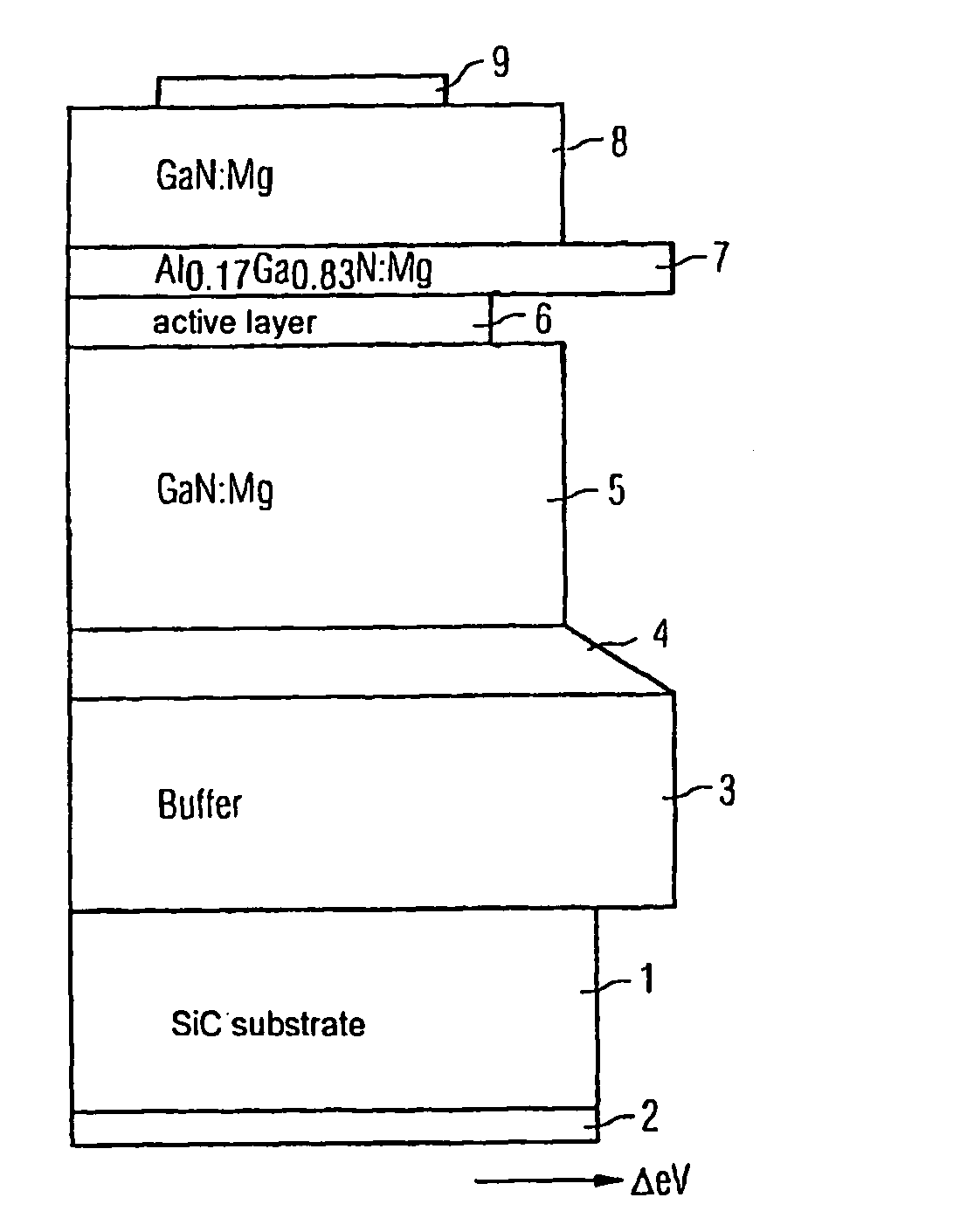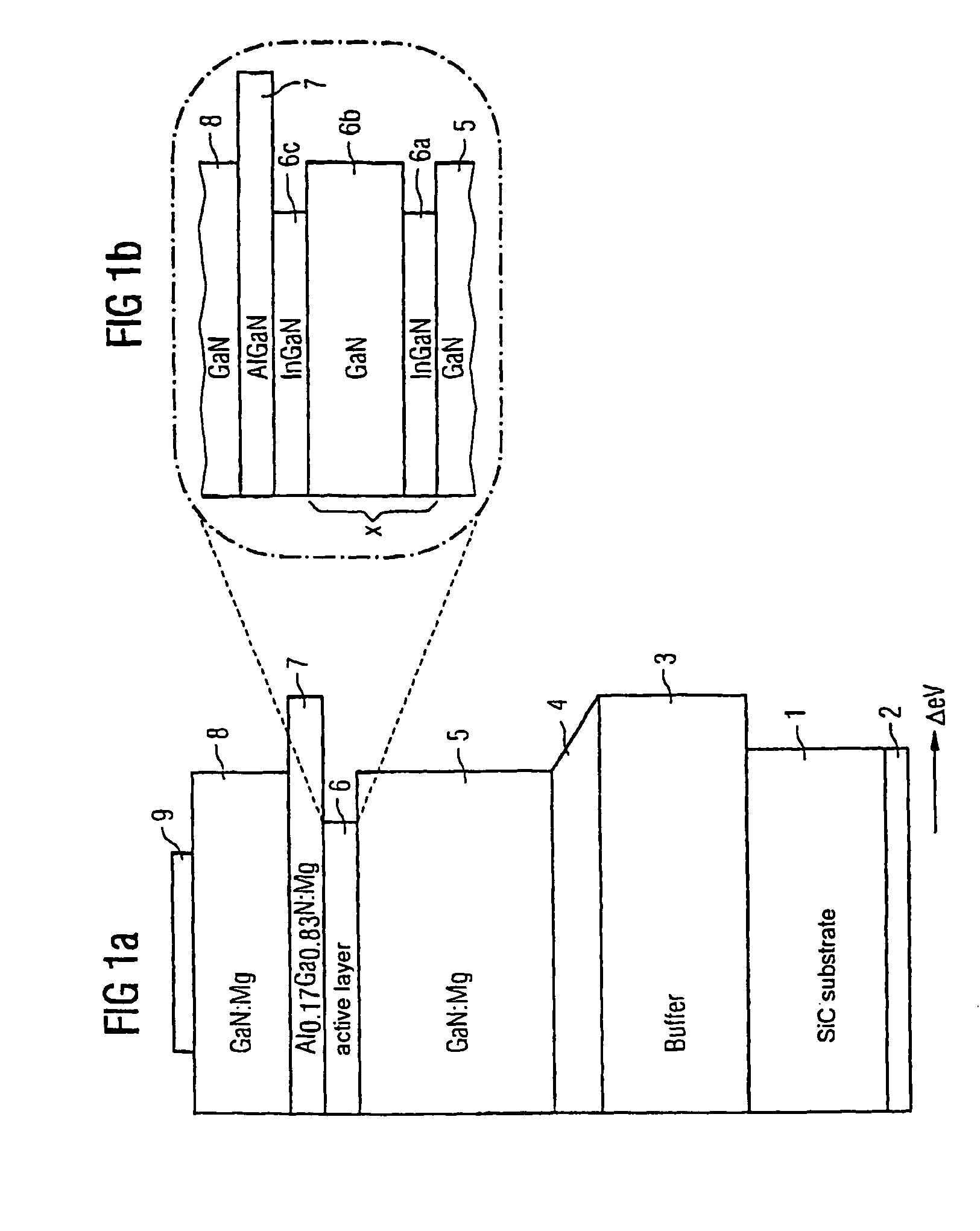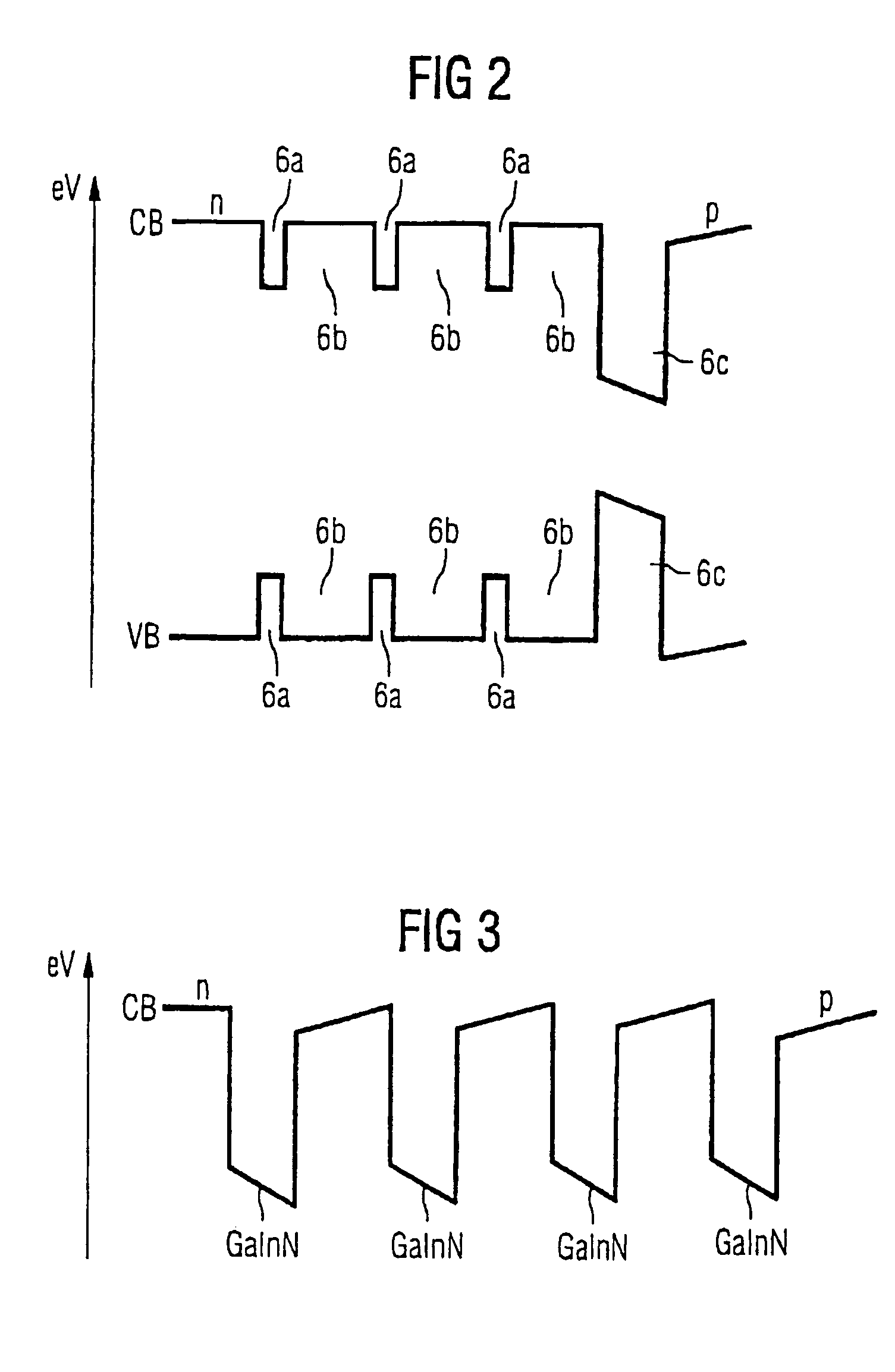Optical semiconductor device with multiple quantum well structure
a semiconductor device and quantum well technology, applied in the direction of individual semiconductor device testing, semiconductor lasers, instruments, etc., can solve the problems of reducing internal quantum efficiency, affecting the injection behavior, and increasing forward voltage, so as to reduce the quality of the deposited layer, reduce the quantum efficiency, and reduce the stability.
- Summary
- Abstract
- Description
- Claims
- Application Information
AI Technical Summary
Benefits of technology
Problems solved by technology
Method used
Image
Examples
Embodiment Construction
[0021]According to FIG. 1a, initially a buffer layer 3 of aluminum-gallium-nitride (AlGaN) is formed on a substrate 1 of silicon carbide (SiC), to which a first contact electrode 2 is connected. This is followed by a further layer 4 of aluminum-gallium-nitride. A further buffer layer 5 of silicon-doped gallium nitride is arranged over the layer 4 and the quantum well structure 6a, b, still to be explained in more detail, is arranged over that, followed by the actual active layer 6c. Arranged over the active layer 6 is a further layer 7 of aluminum-gallium-nitride, which serves as an electron barrier. This layer 7 is preferably doped with magnesium. A further GaN layer, not designated, may be arranged between the layers 6 and 7. A gallium-nitride layer 8, on which a second contact electrode 9 of the device is provided, is arranged over the layer 7.
[0022]The right-hand side of the layer structure shows in a schematically indicated manner the band gap of the single layers between the v...
PUM
 Login to View More
Login to View More Abstract
Description
Claims
Application Information
 Login to View More
Login to View More - R&D
- Intellectual Property
- Life Sciences
- Materials
- Tech Scout
- Unparalleled Data Quality
- Higher Quality Content
- 60% Fewer Hallucinations
Browse by: Latest US Patents, China's latest patents, Technical Efficacy Thesaurus, Application Domain, Technology Topic, Popular Technical Reports.
© 2025 PatSnap. All rights reserved.Legal|Privacy policy|Modern Slavery Act Transparency Statement|Sitemap|About US| Contact US: help@patsnap.com



